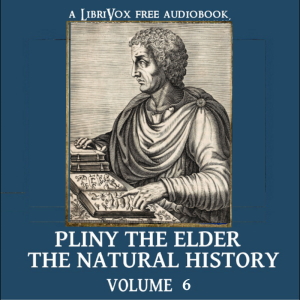The Natural History Volume 6
Naturalis Historia (Latin for "Natural History") is an encyclopedia published circa AD 77-79 by Pliny the Elder. It is one of the largest single works to have survived from the Roman empire to the modern day and purports to cover the entire field of ancient knowledge, based on the best authorities available to Pliny. The work became a model for all later encyclopedias in terms of the breadth of subject matter examined, the need to reference original authors, and a comprehensive index list of the contents. The scheme of his great work is vast and comprehensive, being nothing short of an encyclopedia of learning and of art so far as they are connected with nature or draw their materials from nature. The work divides neatly into the organic world of plants and animals, and the realm of inorganic matter, although there are frequent digressions in each section. He is especially interested in not just describing the occurrence of plants, animals and insects, but also their exploitation (or abuse) by man, especially Romans. The description of metals and minerals is particularly detailed, and valuable for the history of science as being the most extensive compilation still available from the ancient world.
This sixth volume includes books twenty six to thirty, covering the following subjects:
Book 26 - The remedies derived from plants, according to the diseases
Book 27 - Description of plants and remedies derived from them
Books 28 to 30 - The remedies derived from living creatures - Summary by Leni
Genre(s): Classics (Greek & Latin Antiquity), Medical, Nature
Language: English
Keyword(s): nature (894), botany (41), remedies (4), ancient medicine (1)
